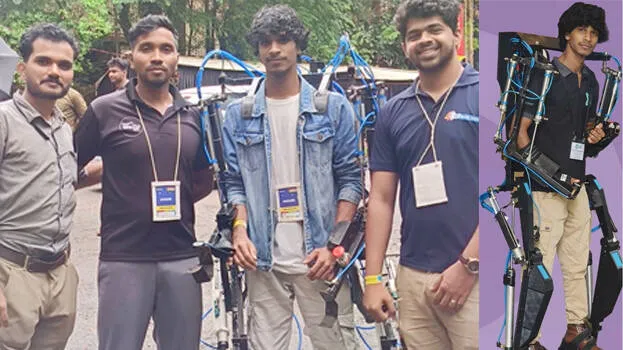

THIRUVANANTHAPURAM: People who have been paralyzed due to a stroke or accident can now walk if they 'think' about it. The arms and legs can be moved with the help of the spine. The technology that enables movement according to the patient's thoughts was developed with the help of artificial intelligence (AI). The exoskeletons currently on the market work with the help of a motor. Mobility can be gradually restored through continuous training.
The exoskeleton, named 'Exobonic', was developed by a group of youngsters through the startup Innodots Innovations. It also won third place in the AI for Social Impact category at the IIC Asia-Pacific Innovation Challenge held in Malaysia.
It is worn like a jacket. The exoskeleton will provide the energy to move the limbs and the core. The device was developed by collecting and analyzing the data of the brain waves of individuals through EEG and EMG, and preparing a special program. The project was in collaboration with the Kadakkal Kimsat Hospital.
Innodots Innovations was founded two years ago by Alan Sindhu Dinsha, a native of Kollam. The exobonic exoskeleton was developed by a team consisting of Al Imtiaz, S Arun Aravindakshan, Akshay B, and Tom Sam Mathew.
How does it work?
The exoskeleton works by sending EEG waves to the machine with the help of AI technology. A special program has been prepared for this by analysing EEG waves collected from several individuals. The program is embedded in a chip and attached to the exoskeleton. If the person wearing the exoskeleton thinks of walking, the machine will move the leg forward through EEG waves.
Cost: Rs. 6 lakh
When Alan was in the 10th standard, his father Dinsha was involved in a bike accident and was bedridden for two years. Alan came up with this idea, seeing his father's sorrow.